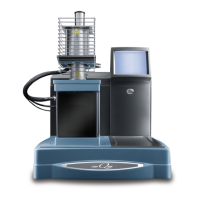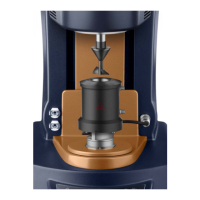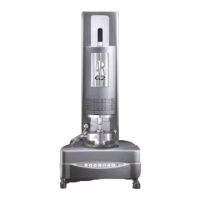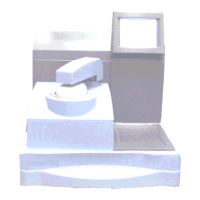TA I
NSTRUMENTS
TGA 2950 B–29
Hi-Res
TM
Option
powder (area typically decreases). Usually with
open sample pans it is best to try to maximize
exposed surface area at all times so that evolved
gases escape quickly and reactions proceed
uniformly. This suggests the use of small
powdered or thin samples which are uniformly
distributed in the sample vessel. When semi-
pressurized sample vessels are used the issue of
exposed surface area is far less important.
Generally, sample sizes in the range of 5 to 15
milligrams are recommended. If the material is
self heating or auto-catalytic, then smaller
sample quantities may help with heating control.
(This is particularly important for constant
reaction rate Hi-Res
TM
mode.) On the other
hand, larger sample quantities (50 to 100 mg)
are recommended for reactions in which a very
small weight change (less than 1 percent) is
being measured. For maximum weight resolu-
tion it is advisable to keep sample weight below
the TGA 2950 weight range change at 100 mg.
A problem with very large samples, which
decompose rapidly and almost completely, is
that the furnace purge may not be able to remove
all of the evolved components and some con-
tamination of the furnace wall and cooling
jacket may result. This may affect the remain-
der of the experiment or future scans.
Bubble Formation
Whenever medium to large sample quantities are
being run, use caution in thermocouple place-
ment. Some materials, particularly polymers,
will form a skin on the outer surface of the
sample as it is heated which inhibits mass
transport of the more volatile components.

